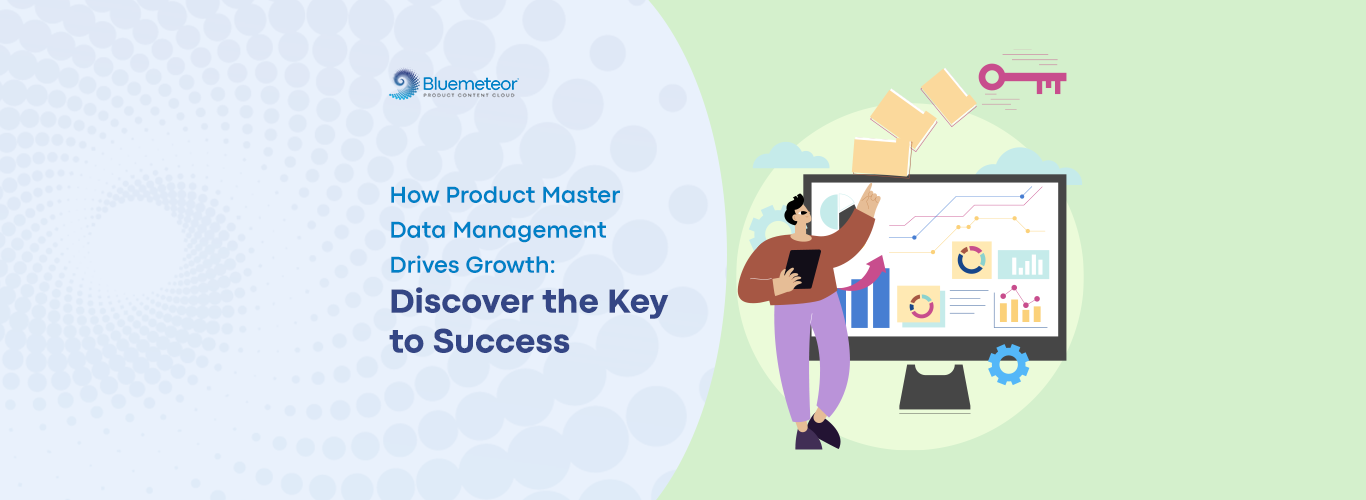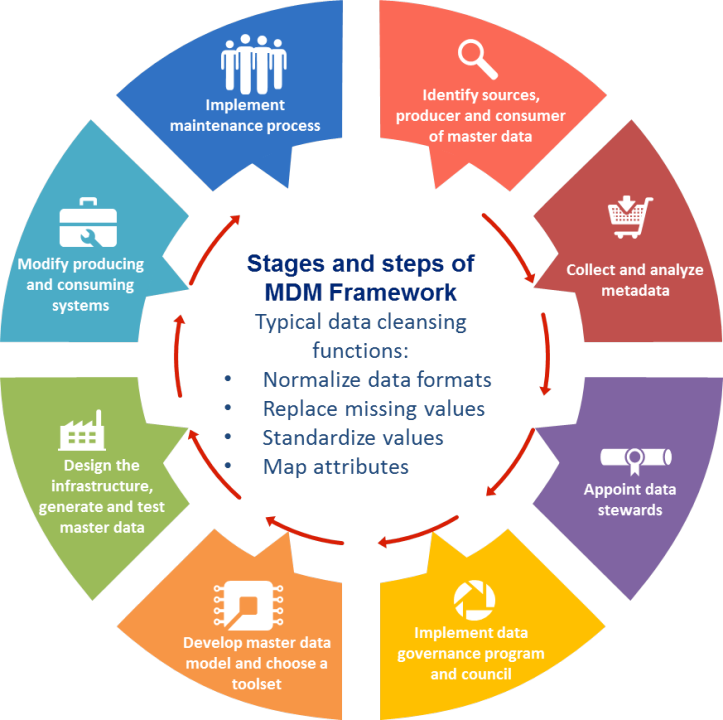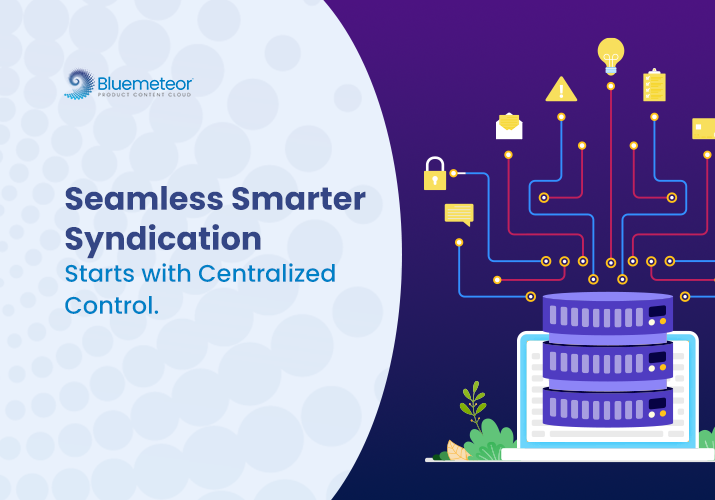How Product Master Data Management Drives Growth: Discover the Key to Success

1. Unlocking the Power of Product Master Data Management
What Makes Product Master Data Management a Game Changer?
Product Master Data Management (PDM) is essentially the art of organizing and managing all the critical data about your products in one centralized location. PDM systems consolidate information from various sources, ensuring that everyone in your organization has access to the same accurate and up-to-date data.
In a world where data is fragmented and dispersed across multiple platforms, PDM provides a single source of truth. It reduces the confusion and errors that come from working with inconsistent data. For example, if your product information is scattered across different departments, one team might have outdated specs while another has the latest version. This inconsistency can lead to miscommunications, mistakes in orders, and missed opportunities.
How Can It Transform Your Business Strategy?
Product Master Data Management doesn’t just tidy up your data; it transforms how you operate. Here’s how:
- Improved Decision-Making: When you have accurate and comprehensive product data at your fingertips, making strategic decisions becomes easier. For instance, you can quickly analyze which products are performing well and which are not, enabling you to adjust your strategies promptly.
- Enhanced Customer Experience: Accurate product data ensures that your customers receive the right information every time they interact with your brand. This leads to better customer satisfaction, fewer returns, and increased loyalty.
- Increased Operational Efficiency: By having all your product data in one place, you eliminate the need for redundant data entry and reduce the chances of errors. This boosts efficiency and frees up time for your team to focus on more value-added activities.
2. The Growth Engine: How Product Master Data Management Fuels Expansion
What Role Does Data Play in Scaling Your Business?
Data is the lifeblood of any growing business. As companies expand, the volume and complexity of data increase, making it crucial to have an effective data management strategy. PDM plays a pivotal role in scaling your business by ensuring that as you grow, your data remains accurate and accessible.
PDM helps manage this growth by providing a scalable infrastructure that can handle increased data volume and complexity. It ensures that new data is seamlessly integrated into your existing system, maintaining consistency and accuracy. This capability is vital for making informed decisions, managing supply chains effectively, and meeting customer demands promptly.
How Can Streamlined Data Drive Market Success?
Streamlined data management not only simplifies internal operations but also drives market success in several ways:
- Faster Time-to-Market: With streamlined data, you can launch new products more quickly. All product information is ready and accurate, so you can focus on getting your product to market rather than scrambling to fix data issues.
- Better Market Insights: Accurate and well-organized data provides valuable insights into market trends and customer preferences. This information can guide your marketing strategies, product development, and sales efforts, helping you stay ahead of competitors.
- Effective Inventory Management: With clear visibility into product data, you can manage inventory levels more effectively, reducing the risk of stockouts or overstocking. This not only improves customer satisfaction but also optimizes your supply chain operations.
3. Secrets to Success: Leveraging Data for Competitive Advantage
What Strategies Can You Use to Maximize Data Efficiency?
To harness the full potential of Product Master Data Management, you need to implement strategies that maximize data efficiency. Here are some key approaches:
- Centralize Your Data: Ensure that all product data is stored in a single, centralized system. This reduces redundancy and ensures that everyone in your organization has access to the same information.
- Implement Data Governance: Establish clear guidelines for data management, including data entry standards, update procedures, and data quality checks. This helps maintain data accuracy and consistency.
- Utilize Data Analytics: Invest in data analytics tools to gain deeper insights from your data. These tools can help you identify trends, forecast demand, and make data-driven decisions that give you a competitive edge.
- Automate Data Processes: Automate routine data management tasks, such as data entry and updates, to reduce manual effort and minimize errors. Automation also allows your team to focus on more strategic activities.
How Does Accurate Data Impact Your Bottom Line?
Accurate data has a direct impact on your bottom line. Here’s how:
- Reduced Errors and Costs: Accurate data reduces the likelihood of errors in orders, inventory, and other business processes. Fewer mistakes mean fewer costs associated with returns, corrections, and customer dissatisfaction.
- Informed Decision-Making: With accurate data, you can make well-informed decisions that drive business growth. For instance, understanding which products are most profitable allows you to focus your resources on high-margin items.
- Increased Revenue: By improving customer experiences and optimizing operations, accurate data can lead to increased sales and revenue. Customers are more likely to make repeat purchases if they receive consistent and reliable information.
4. Use Cases: How Product Master Data Management Drives Real-World Success
What Are the Key Takeaways from Successful Implementations?
Examining case studies of companies that have successfully implemented Product Master Data Management systems can provide valuable insights. Here are a few examples:
- Retailer Success: A major retailer implemented a PDM system to consolidate product data across its online and physical stores. The result was a significant reduction in inventory discrepancies and improved stock levels, leading to increased sales and customer satisfaction.
- Manufacturing Efficiency: A manufacturing company adopted PDM to manage its product specifications and supplier information. This led to more efficient production processes, reduced lead times, and better coordination with suppliers.
- E-Commerce Growth: An e-commerce platform used PDM to standardize product data from various sellers. This enhanced the platform’s search functionality and product recommendations, resulting in higher conversion rates and customer retention.
How Can You Apply These Lessons to Your Business?
To apply these lessons to your own business, start by evaluating your current data management practices. Identify areas where data inconsistencies or inefficiencies are affecting your operations. Implement Product Master Data Management strategies that address these issues and continuously monitor and optimize your data management processes.
Consider investing in PDM tools and technologies that suit your business needs. Engage with stakeholders across your organization to ensure a smooth transition and encourage adoption of new practices.
5. Getting Started: Practical Steps to Implement Product Master Data Management
What Are the First Steps to Effective Data Management?
Implementing a PDM system can seem daunting, but breaking it down into manageable steps makes the process easier:
- Assess Your Current Data: Start by evaluating your existing data sources and processes. Identify gaps, redundancies, and areas for improvement.
- Choose the Right PDM Solution: Select a PDM system that aligns with your business needs and integrates well with your existing tools. Consider factors such as scalability, ease of use, and cost.
- Clean and Standardize Your Data: Before migrating to a new PDM system, clean up your existing data to eliminate errors and inconsistencies. Establish data standards to ensure consistency moving forward.
- Train Your Team: Provide training for your team on the new PDM system and data management practices. Ensure everyone understands their role in maintaining data accuracy and integrity.
- Monitor and Optimize: After implementation, regularly review your data management processes and system performance. Make adjustments as needed to address any issues and continuously improve data management practices.
How Can You Measure the Impact of Your Data Strategy?
To gauge the effectiveness of your Product Master Data Management strategy, track key performance indicators (KPIs) such as:
- Data Accuracy Rates: Measure the accuracy of your product data and monitor any errors or discrepancies.
- Process Efficiency: Assess how well your data management processes are functioning, including data entry speed and error rates.
- Business Outcomes: Evaluate the impact of improved data management on your business metrics, such as sales growth, inventory turnover, and customer satisfaction.
Regularly review these KPIs to ensure your PDM strategy is delivering the desired results and make adjustments as needed to optimize performance.
6. Common Pitfalls and How to Avoid Them
What Mistakes Should You Watch Out For?
When implementing a PDM system, be aware of common pitfalls that can hinder success:
- Inadequate Planning: Failing to plan thoroughly can lead to a poorly executed PDM implementation. Ensure you have a clear roadmap and allocate sufficient resources for the project.
- Neglecting Data Governance: Without proper data governance, your PDM system may become cluttered with inconsistent or inaccurate data. Establish and enforce data management policies from the start.
- Lack of Stakeholder Buy-In: If key stakeholders are not involved or supportive of the PDM implementation, it can lead to resistance and difficulties in adoption. Engage stakeholders early and communicate the benefits of the new system.
- Ignoring Change Management: Implementing a PDM system often requires changes to existing processes and workflows. Neglecting change management can result in disruptions and reduced efficiency. Provide training and support to help your team adapt to the new system.
How Can You Ensure a Smooth Data Management Transition?
To ensure a smooth transition, follow these steps:
- Communicate Clearly: Keep all stakeholders informed about the PDM implementation process, timelines, and benefits. Address any concerns and provide regular updates.
- Provide Training and Support: Offer comprehensive training for your team to ensure they are comfortable with the new system and data management practices. Provide ongoing support to address any issues that arise.
- Start with a Pilot: Consider starting with a pilot phase to test the PDM system with a small subset of data before full-scale implementation. This allows you to identify and address any issues before going live.
- Monitor and Adjust: Continuously monitor the implementation process and gather feedback from users. Make adjustments as needed to address any challenges and improve the system’s effectiveness.
7. Future Trends: What’s Next for Product Master Data Management?
How Will Emerging Technologies Shape Data Management?
The future of PDM is being shaped by emerging technologies that promise to enhance data management capabilities:
- Artificial Intelligence (AI): AI can automate data entry and analysis, reducing manual effort and improving accuracy. AI-powered tools can also provide predictive insights, helping businesses anticipate market trends and customer needs.
- Machine Learning (ML): ML algorithms can analyze large volumes of data to identify patterns and trends. This can help in making more informed decisions and optimizing business processes.
- Blockchain: Blockchain technology can enhance data security and traceability by providing a decentralized and tamper-proof record of transactions. This can be particularly useful in managing supply chains and verifying product authenticity.
- Cloud Computing: Cloud-based PDM solutions offer scalability and flexibility, allowing businesses to manage data from anywhere and easily integrate with other systems. Cloud computing also supports real-time data updates and collaboration.

What Should You Prepare for in the Coming Years?
To stay ahead in the evolving data landscape, consider the following:
- Stay Informed: Keep up with the latest trends and technologies in data management. Regularly review industry reports and participate in relevant events and webinars.
- Invest in Technology: Evaluate and invest in emerging technologies that align with your business needs and can enhance your PDM capabilities.
- Adapt and Innovate: Be prepared to adapt your data management practices as new technologies and trends emerge. Continuously seek opportunities to innovate and improve your data management strategy.
- Focus on Data Privacy and Security: As data management becomes more complex, ensuring data privacy and security remains a top priority. Implement robust security measures and comply with data protection regulations to safeguard your information.
Conclusion
In a world where data drives success, mastering your product information is crucial. Product Master Data Management (PDM) not only streamlines your data but also empowers your business to grow and thrive. By centralizing your product information, you enhance decision-making, boost operational efficiency, and improve customer satisfaction. Implementing PDM can transform how you manage data, fueling expansion and driving competitive advantage.
For businesses looking to elevate their data management, Bluemeteor’s Product Content Cloud offers a powerful solution. Our platform integrates seamlessly with your existing systems, providing a centralized hub for all your product information. With automated updates, advanced analytics, and robust data governance, Bluemeteor’s Product Content Cloud helps you maintain data accuracy and drive growth.
Ready to see how Bluemeteor can transform your product data management? Schedule a demo today and discover how our solution can streamline your operations and support your business’s growth journey.





